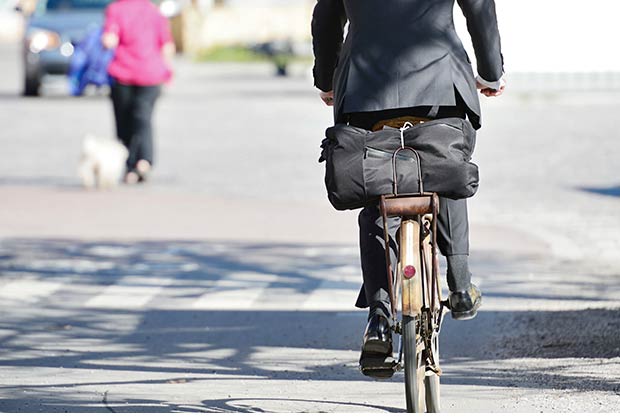Student’s tool measures urban bike transportation equity

Rachel Prelog
Municipal planners can use a tool developed by a Texas A&M urban planning student to determine if the location of current or planned bicycle lanes in their community enhance the mobility of residents who may not have ready access to automobiles.
The Bicycle Equity Index, developed by Rachel Prelog, is described in her [report] (http://www.bikeleague.org/content/new-report-equity-access-bicycle-infrastructure) “Equity of Access to Bicycle Infrastructure,” which was commissioned and published by the [League of American Bicyclists] (http://www.bikeleague.org/) , a Washington, D.C.-based advocacy group.
“Prelog’s report provides a means for communities to better understand the relationship between demographic groups and their respective access to bicycle lanes,” said Ken McLeod, an LAB legal and policy specialist.
The index is a composite measure of U.S. Census data from five population groups — people less than 18 and more than 65 years old, minorities, low-income and zero-car households.
“These groups are important to consider because they may possess a greater need of affordable modes of transportation and should be a priority for bicycle infrastructure investment,” said Prelog, who created maps that located concentrations of these groups in Chicago using index data and geographic information systems software.
The maps were part of a case study within Prelog’s report that focused on Chicago’s bike lane system using the city’s current and planned bike lanes and index data from 2013 — the most recent census data available. A map in the report shows that sizeable swaths of the city with high concentrations of people belonging to aforementioned groups are underserved by the city’s existing bike lane system.
“The case study is one example of a pattern that may exist throughout current and planned bicycle networks where more resourced neighborhoods and communities receive the majority of bicycle facilities,” said Prelog.
“Maps created with BEI data are a helpful tool in convincing stakeholders that inequitable planning is a problem,” she said.
Other maps in the report show that Chicago’s proposed bike lane system will provide more lanes in areas where the city’s Hispanic and African American populations are concentrated.
The mapping tool addresses concerns from a growing number of bicycle transportation advocates and community organizations calling for bicycle transportation equity in current and future infrastructure development projects, said Prelog.
It is important, she continued, that every community making transportation investments, including bicycling and walking investments, understand the potential inequities that may result and use that understanding to ensure more equitable processes and outcomes.
Every community, she said, has unique values and equity concerns and may use the Bicycle Equity Index flexibly, applying its own criteria.
The report contains a detailed appendix, with step-by-step instruction on creating the index and tips for importing the data into GIS software.
The project began as Prelog’s entry in Texas A&M’s GIS Day competition in the fall 2014 semester. She shared her entry with the League of American Bicyclists’ [Equity Advisory Council] (http://bikeleague.org/content/equity-advisory-council-2) , which asked her to continue developing the project.
Tags
- academics
- chud gallery
- feature
- graduate work
- landscape architecture & urban planning
- laup gallery
- planning
- sustainability
- transportation
- urban systems
Related Posts

Students' award-winning study aids campus bike program

Grad LAND students design green West Campus master plan

College hosts international LAUP conference

Two Texas towns helped by Texas Target Communities
Follow Us
Facebook Twitter Vimeo Youtube Flickr RSS
Recent Posts

Planning prof heads study of disaster housing aid

A message from the dean

Former student remembered as expert planner

Leading educator named new head of Architecture Dept.






_thumbnail_small.png)
